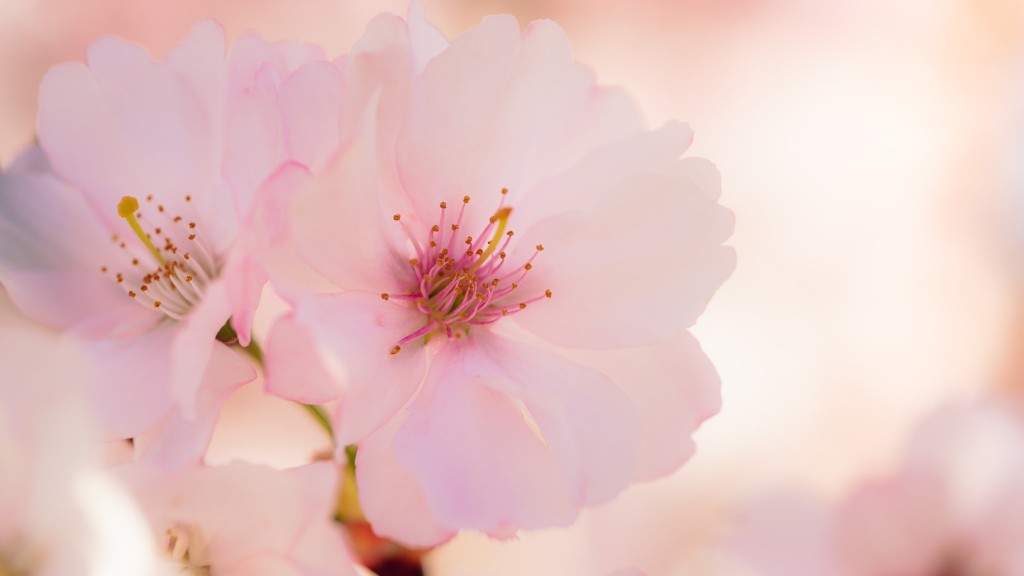Background
Growing trees from cherry seeds is both a challenging and rewarding experience. The process of developing a tree from a cherry seed can require a great deal of patience, specific knowledge, and the proper growing conditions. While it is indeed possible to grow a cherry tree from a seed, it is important to note that it will take several years before the tree will flower and bear fruit. Additionally, the fruit-bearing tree may not resemble the same kind of cherry tree that the seed came from.
Pros and Cons
The primary benefit of growing a tree from a cherry seed is the cost-savings associated with not purchasing a tree and planting it. By beginning the process with a seed, gardeners can greatly reduce the time and money they must invest to get a tree that will bear fruit. Additionally, the process has a high success rate and can be done in almost any location or environment.
However, growing a tree from a cherry seed can be quite challenging and time consuming. In addition to the waiting period required for the tree to reach a productive age, gardeners must also be mindful of the overall growing conditions: The tree’s environment must be tailored specifically to cherry growth in order for the tree to produce fruit.
Tree Growing Requirements
It is generally recommended to begin the process of growing a tree from a cherry seed the same way one would begin planting a pre-purchased tree. Specifically, the soil should be prepped and fertilized well before sowing the seed. The soil should also have a pH level of 5.5 to 6.5, which is the optimal environment for most cherry varieties.
Once the soil is prepared, the cherry seed can be planted anywhere from three to four inches deep. Gardeners should be sure to keep the soil moist, either through natural water or through watering it regularly. Finally, the tree should be protected from the elements, such as strong winds, frost and excessive sunlight.
Nutrition and Care for Cherry Trees
Cherry trees thrive with regular pruning and trimming. Gardeners should take special care to remove damaged or dead branches from the tree to ensure proper growth. Additionally, the tree should be fertilized regularly with a balanced formula to ensure that the tree receives sufficient minerals and nutrition.
Finally, cherry trees must receive proper pest control in order to protect them from infestations. While there are many chemical products available on the market, it is also possible to use natural pest control methods like planting companion plants, such as basil, dill, garlic or chives, which will help deter pests.
Growing Conditions
It is important to note that not all climatic conditions are conducive to cherry tree growth. Optimal growing conditions for a cherry tree include plenty of direct sunlight and moist, well-drained soils. The tree should be planted in a location that is sheltered from strong winds and other environmental factors.
Additionally, cherry trees require winter chill hours in order to produce fruit. Gardeners should check local climate reports for the chill hours for the area in order to ensure that the tree will get enough exposure to the cold temperatures it needs to produce fruits.
Considerations
Gardeners who wish to grow a cherry tree from a seed should be aware of the soil and climatic conditions necessary for successful growth. Additionally, they should have patience, as it can take several years before the tree will produce a viable crop. Finally, gardeners should be mindful of the other trees and plants growing in their garden as cherry trees can be susceptible to pest infestations.
Propagating
If gardeners have access to a healthy cherry tree, they can also propagate it to grow additional plants. Propagation can be done in a variety of ways, from grafting to taking softwood cuttings. Propagation ensures that the gardeners can produce hundreds of cherry trees with the same genetic makeup, allowing them to create a cherry orchard in their backyard.
Pruning
Pruning is an essential part of caring for a cherry tree. Pruning should be done regularly and selectively, ensuring that the tree is properly-shaped and that dead or diseased branches are removed. Additionally, pruning helps maintain the size of the tree by keeping the larger branches away from areas with limited sunlight.
Harvesting
When a cherry tree is ripe, the cherries should be harvested as quickly as possible. Gardening experts recommend gently twisting the fruit off the tree and placing it into a basket or bowl. Gardeners should also keep an eye on the cherry tree’s ripeness, as over-ripe cherries can lead to rot, mold, or mildew.
Harvesting Precautions
When harvesting cherries, gardeners should take caution as the sap of the trees can cause a skin reaction. Additionally, care must be taken to avoid damaging the branches, as this can invite disease or insect infestations. Gardeners should also take precautions against birds, as the fruit is especially enticing to them.


